Sponsored
The Latest from TechCrunch |  |
- Nintendo Boss Takes The Blame For 3DS Sales, Cuts His Paycheck In Half
- Groupon Now In Your Foursquare, Two Great Tastes That Taste Great Together
- President Obama Calls On U.S. Citizens To ‘Tweet’ To Lawmakers About Raising Debt Ceiling
- Warning: The Latest MacBook Air Packs A Less Powerful Version Of Thunderbolt
- Head-To-Head Review: Canon T3i Vs. Nikon D5100
- Sony’s Qriocity Delivers Video To Xperia Devices
- HTC Reports Record Profits In Q2, 12.1 Million Handsets Shipped
- Your ISP Is Screwing You: As Your Service Costs Go Up, Their Backbone Costs Go Down
- Samsung Goes Mum With Phone And Tablet Sales Stats
- Springboard Presents 10 Startup Graduates To Investors
- CA Buys Website And App Monitoring Startup WatchMouse
- Review: The Roku 2 XS Does Internet Media Streaming, Motion Gaming In A Tiny Package
- Dell Will Add A 10-Inch Streak To Its Android Line-Up
- PressOK’s PlacePlay Lets Developers Integrate Location Features And Local Advertising Into Games
- The Isostick Makes A Mockery Of Optical Disk Hegemony
- Pixeet: Full Panorama Photos With Almost Any Phone
- Daily Crunch: 3D Spot
- Airbnb Victim Speaks Again: Homeless, Scared And Angry
- In The Battle Of The Music Tweets, Turntable.fm Has More Klout Than Spotify Or Pandora
- Looking To Sink Their Teeth Into Some Tasty Northwest Startups, Google Takes A Bite Of PIE
| Nintendo Boss Takes The Blame For 3DS Sales, Cuts His Paycheck In Half Posted: 29 Jul 2011 09:18 AM PDT When companies go through a rough patch, it’s pretty rare to see the big man upstairs step up in an awesome way. Take RIM for example. In the middle of security troubles in India and amidst tough competition from Apple and others — right before a major product, the BlackBerry PlayBook was launched — co-CEO Mike Lazaridis shut down a BBC interview not only making himself look overly defensive, but making the company look frazzled. Today Nintendo's president took a different route. After the company's disappointing quarterly results yesterday (and first-ever quarterly loss), Satoru Iwata told shareholders that he takes the blame, reports DigitalTrends. As a result, he's cutting his paycheck in half. A good deal of Nintendo's quarterly losses can be attributed to the 3DS, which hasn't been selling as well as the Japanese company had hoped. Nintendo slashed its expected net profit from 1.4 billion to 258 million — a massive downgrade. Obviously, half of Mr. Iwata's paycheck isn't going to cover those costs. Other high-level executives will also see a slash to their paychecks, between 20 and 30 percent. To respond to slow 3DS sales, Nintendo yesterday cut the price of its portable 3D gaming system from $249 to $169, which makes the device incredibly difficult to profit from. Iwata acknowledged this in the meeting, and said he expects the price cut to help grow demand, which should then cut costs of production. Iwata also recognized the fact that a big problem with the 3DS is a lack of games, an issue the company plans to address ASAP. |
| Groupon Now In Your Foursquare, Two Great Tastes That Taste Great Together Posted: 29 Jul 2011 08:55 AM PDT Well, this is a potentially huge partnership. After extended negotiations, Groupon deals will finally start to appear in Foursquare. And it’s not just the normal daily Groupons that will appear, but also the newer mobile Groupon Now deals. The inclusion of instant Groupon Now deals sets this partnership apart from the other daily deal partnerships Foursquare announced earlier this month with LivingSocial, Gilt City, zozi, BuyWithMe and AT&T. Those specials are all for regular daily deals which cannot be purchased immediately. You need to buy the deals, but cannot redeem them until after all the deals have been sold that day. That is just how daily deals work, which makes sense when you are buying them from your computer. But when you are looking for deals nearby on your mobile phone, you want to be able to redeem them spontaneously. Groupon Now is designed to do just that. These are mobile deals available in its own apps, as well as through distribution partnerships with other mobile apps such as Loopt, and now Foursquare. Groupon Now deals are now available in 25 cities, and they will appear in Foursquare alongside other specials and daily deals from other partners. But the fact that they can be redeemed instantly will set them apart. They also close the redemption loop and will allow better tracking of deals because Groupon knows exactly how many deals are redeemed and when (as opposed to just knowing how many vouchers have been sold). These are exactly the kind of deals that make sense within the context of Foursquare. By partnering with an established mobile app that has been downloaded more than 10 million times, Groupon gets instant distribution. (Seriously, how many of you are going to download the Groupon Now app?). People use Foursquare for other reasons, and now they get to see deals also as an added bonus. It’s a good way to introduce these new types of deals and gradually expand them. So why didn’t Foursquare announce Groupon back when it did the other partnerships with LivingSocial and the rest? The hold-up was that Foursquare requires Groupon and all partners to consume Foursquare’s APIs rather than the other way around. From what I can gather it was a bit of a butting of platforms. But it’s all good now. Foursquare also had to do a little engineering work to add a “redemption window” for deals that are only good for a certain time if day such as many Groupon Now deals. Expect to see other Foursquare specials take advantage of that redemption window soon. Foursquare’s business development director Tristan Walker will be speaking today at our Mobile CrunchUp in Palo Alto. Now I know what I’ll be asking him. |
| President Obama Calls On U.S. Citizens To ‘Tweet’ To Lawmakers About Raising Debt Ceiling Posted: 29 Jul 2011 08:24 AM PDT U.S. President Barack Obama has been flocking to Twitter of late, starting to actually send out Tweets himself and even holding a town hall on the platform. And in his statement to the American public today, President Obama encouraged U.S. citizens to “call, email and Tweet,” their members of congress about the debt ceiling issue. Basically the U.S. treasury is in danger of running out of cash and the government has a limit in borrowing. The President has asked lawmakers to raise the debt ceiling, and both Democrat and Republican lawmakers are currently embroiled in negotiations. Of course, politically speaking, the president is in a desperate situation with the debt ceiling issue and is relying on the American people to put pressure on lawmakers to raise the ceiling before the Treasury runs out of cash. From the technology standpoint, I think it’s fascinating that Obama placed Tweeting in the same group as methods of communication like phone or email. In his speech today, Obama told citizens that they need to put the pressure on lawmakers via these three methods of communications. And notice, he didn’t say Facebook message your Congressperson. It’s no doubt a pretty big endorsement for Twitter. One thing that was missing from his call to action—a hashtag. In case you are interested in finding your Member of Congress’ Twitter handle, TweetCongress provides a database of lawmakers on Twitter.
|
| Warning: The Latest MacBook Air Packs A Less Powerful Version Of Thunderbolt Posted: 29 Jul 2011 08:19 AM PDT Apparently not all Thunderbolt ports are created equally. Anadtech discovered that the Thunderbolt chip within the latest MacBook Air is not the same found in the current MacBook Pro. The Air’s version packs less power and throughput resulting in less abilities. Hope you weren’t planning on hooking up two of those new fancy Thunderbolt Displays. Thunderbolt is an amazing interconnect, capable of running four bidirectional, dual standards 10 Gbps channels. The capabilities are nearly endless as the single I/O port allows for nearly any interface normally associated with PCIe or DisplayPort. It’s how the latest MacBook Pros can run dual Thunderbolt displays that each feature a sort of docking station with three USB ports, one FireWire port, Gigabit Ethernet, and another Thunderbolt port. The MacBook Air’s Thunderbolt is slightly different, though. It’s only capable of two 10 Gbps channels thanks to a less capable, but physically smaller, controller chip. This means among other points that the Air can only be able to run one Thunderbolt display. Anandtech notes that other manufacturers might use the same small controller card in their upcoming products. Apple doesn’t hide this fact on the Air’s product page. “Or use the Thunderbolt port to connect the new Apple Thunderbolt Display and transform your ultracompact MacBook Air into a complete desktop workstation.” But they probably won’t stop an order with a MacBook Air and two Thunderbolt Displays. [Anandtech via AppleInsider, image via iFixit] |
| Head-To-Head Review: Canon T3i Vs. Nikon D5100 Posted: 29 Jul 2011 07:55 AM PDT With HD video recording, great image quality, and a solid selection of lenses, the Nikon D5100 and Canon T3i are on the top of a lot of wish lists out there. For people already in the Canon or Nikon camp (full disclosure: I’m a Canon man), the choice is obvious if an upgrade is in their future, but for the less dogmatic and new recruits to the DSLR crowd, it’s not nearly as clear-cut. $800 buys you a lot of camera either way. Pixel peepers will want to check out the reliable and exhaustive reviews at DP Review (here and here) and other photography-centric sites where systematic checks on image quality are conducted, but I wanted to just put these two worthy devices head to head and see not just how they compare technically but in everyday use. Before I get into my anecdotal review, let’s just review the major specs on the two cameras.
So, nothing decisive. Nikon has an edge in its autofocus system and (ostensibly) ISO capability, and Canon has a couple more megapixels and a slightly better LCD. But they’re close enough that it’s no way to determine which to get. Yet one of these must be the better camera, or at least certain types of shooters might reasonably prefer one or the other. I’m going to look at a few of the major differentiating points that you wouldn’t really think about unless you had the camera in your hands. Note that these points are not necessarily new with these cameras! The primary change in these two models is the addition of an articulating LCD. Otherwise they’re very similar to their predecessors. But since these are the newest models and are likely to make the prospective DSLR-buyer lose some sleep (as they are both excellent values), a straight comparison seems in order. This is a practical comparison focusing on things consumer commonly care about. Both cameras were tested using their kit lenses and processed in Adobe Lightroom. And the lenses form as good a place to start as any, as a large amount of first-time DSLR buyers stick with the kit lens at least for the starting period. Kit lens The T3i comes with an 18-135 F/3.5-5.6. The D5100 has an 18-55 F/3.5-5.6. Both have optical image stabilization, which helps keep longer exposures sharp (I wouldn’t trust it below 1/20th of a second) but can’t really help in really bad light. The Canon lens is the more practical choice here. While neither one is any great shakes optically and you lose light really quick when zooming in, the Canon has two advantages over the Nikon: first, that extra bit on the long end is really handy if you only have the one lens. It’s quite a decent telephoto length, suitable for getting wildlife, birds, and so on at middle distance. The same object at the end of the Nikon focal length would have less clarity in most situations. Second, the Canon lens, while somewhat larger, has all internal elements — meaning nothing on the outside moves except the switches and rings. The Nikon, on the other hand, has a telescoping front element that moves in and out with both focus and zoom, and manual focusing spins the whole barrel. It feels a bit chintzy, like it couldn’t handle a good ding on a doorframe, and it’s poking out of the front all day long. For what it’s worth, though, my brief tests showed the Nikon lens performed better optically. At 100%, the Canon shots showed significantly more fringing in bright light. Not something you’d notice if you were to shrink the pictures by a bit, but certainly worth mentioning. Something that would have been nice to have on both lenses would be maximum aperture indicators on the zoom dial, but that’s uncommon anyway and the in-viewfinder info is sufficient. Viewfinder Both viewfinders are run-of-the-mill pentamirror, so neither has a major advantage over the other. But they’re not identical. The rubber eye rest is slightly different but comfortable on both. Neither sticks out far so you’ll be rubbing your nose on the screen no matter what. The Nikon’s viewfinder shows more of the image than the Canon — that is, given the same focal length on the lens, the Nikon shows more of what will actually be captured. It’s only perhaps 3% more (by my estimate) but it’s noticeable if you’re looking for it. That said, I like the readout in the Canon viewfinder better; it seems to me to be brighter and more readable. The autofocus points are much more visible on the Canon viewfinder, which is a matter of taste really. The Canon has a circle for showing where center-weighted exposure will limit itself to, which is handy. LCD Canon’s LCD is the same size but slightly higher-resolution (720×480 instead of 640×480), and has the advantage of being natively 3:2. I find this makes images a little nicer to review, but both screens are way better than the 480×320 screens we had just a couple years ago. The Canon’s also seems to me to look ever so slightly sharper; I could read the title of a book ten feet from me at 18mm on the Canon just barely, but on the Nikon I couldn’t make it out. Both screens articulate out to the left and then spin 270 degrees vertically. Action on both is smooth and they booth seem about as sturdy as a built-in articulating LCD should. Both lock down securely with either the LCD or plastic back outwards. However, the Canon’s has a cutout “handle” on the right, and the Nikon has two small grips on the top and bottom. Canon’s works best for grabbing with your thumb, and I found it more convenient than the two-finger pinching grab for the Nikon. That’s another matter of taste but I definitely preferred the thumb grip. Controls Apart from the normal differences in Canon/Nikon layouts, the latest Canons have in addition a sculpted shape and are nearly flush with the body. The D5100′s buttons are all circular, though of various “depths.” Both have a mix of clicking and non-clicking buttons, and the general rule seems to be that any buttons that directly affect the photo don’t click. The Canon’s buttons were more consistent in their feel, but they’re so nearly flush that some can be difficult to identify in the dark or without taking your eye from the viewfinder. Its directional buttons are certainly better, though: Nikon’s circular D-pad feels soft. I prefer Nikon’s silvered, more vertical shutter button, though, and that’s certainly the button you’ll be using the most. As a Canon user, I’ve grown used to the jog dial being under my index finger, but whether you like it better there than under your thumb is something for you to figure out on your own. Canon’s mode dial is far larger, which I find helpful, though it stops at A-Dep (why not manual?) and mode, and Nikon’s just keeps spinning. Knowing the position of the dial relative to the ends can be a time saver. One thing the T3i has that the D5100 doesn’t is a dedicated ISO control button. On the D5100, you have to go one step into the menu to select a different ISO, while on the T3i it’s just one button press. This is strange to me because Nikon has a finer grain of control on the ISO and you’d think they’d want to have that out there. I’d trade the “info” button for ISO in a second. As for the interface on the screen: Nikon’s graphical representation and primary-stats-central look is attractive and nice for people who aren’t used to SLR controls — but it seems a bit flashy and secondary information isn’t quite as clearly ascertained at a quick glance. Live view The D5100 has a great little snappy lever that switches you in and out of LV. The Canon has a dedicated (circular) button. The D5100 gets into LV much more quickly, too — I’d say a quarter of a second, while the Canon takes a half. It doesn’t sound like much, but it’s truly noticeable and may affect your usage of that mode. Once in LV, both cameras are sluggish on autofocus. The Nikon seemed to make its mind up more quickly, though, while the Canon took several extra steps, making a labored clicking noise. Manual focus is still probably your best option, but they’re getting better and Nikon is certainly the winner here. Body The T3i is an ounce lighter than the Nikon, but it’s also larger and much more aggressively sculpted on the right side (though it’s difficult to tell from the pictures). Those with larger hands will appreciate this, as it provides more real estate in general, but neither camera is big enough for big hands. I’ve got good-sized hands and I’ve been shooting on a Rebel for years, but it’s not for everyone. Nikon has a bigger lip poking out under the shutter but overall Canon has more going on. Canon also put more sculpting into the right rear and left front sides. The T3i has a texture, grippy material in both places and a sort of valley that your thumb goes in while holding the camera normally. The flaps and doors covering the ports and such aren’t exactly leagues apart quality-wise, but the Nikon’s SD door springs up, and all its ports are under a single flap, both of which I think give it an edge. Movie mode Canon has a dedicated movie mode on the mode dial, while Nikon has you record using a separate button while in Live View. There are merits to both of these (especially considering how fast Nikon jumps into LV), but being able to boot straight into video-shooting mode is handy if you’re doing primarily video content. As for formats, it’s a toss-up. In 1080p the cameras have the same framerates but Nikon has the advantage of two quality settings. Both produce quite huge files. At 720p, Nikon uses the more common 24 or 30 frames as options, while Canon has 50 and 60fps. On one hand, the Nikon formats are more easy to use for normal shooting, while on the other, 60fps works as a sort of poor man’s slow motion, slowing things down by a half or more depending on how you display it. But then Nikon goes and messes things up by having the low-quality option be 640×424 instead of the standard (and 4:3) 640×480. That’s 3:2 more or less, but 16:9 and 4:3 are much more commonly used for video. Nikon has some in-camera effects like “miniature” and “Night Vision,” but to be perfectly honest I think if you’re shooting video with your DSLR you’re far less likely to want in-camera effects. At the very least a new amateur video editor will put things in iMovie or the like, where these effects are better, more adjustable, and don’t bog down the camera (as some of them do). That said, being able to see the scene in black and white could be handy. Image quality While DP Review’s charts will tell you far more about this than my little dabblings here, it can’t hurt to have a few real-world comparison shots you can pore over if you like. The cameras were set to the exact same exposure settings and set to go straight to large JPEG (no RAW performance data for you). I do want to mention, though, that on “manual” mode, the Nikon kept changing the exposure I’d set it to. I really don’t know why in manual mode it would change anything at all. Here you have the ideal lighting situation: nothing moving, nice fast shutter and medium aperture. I set both cameras to 1/500th at f/9 and 200 ISO. If you download the 100% one you can really see the differences in CA. T3i (left) – D5100 (right) Next, in the same bright circumstances, a shot using the most automatic mode. Again I think the win goes to Nikon, due to some excessive processing on Canon’s part. T3i D5100 And here’s a low-light situation, at ISO 3200. Neither one performs particularly well in resolving the spider’s details (they were in fact in focus), but the Canon is certainly a more usable shot. T3i (left) – D5100 (right) ConclusionI can’t tell you which of these cameras will feel better to shoot. But let’s just run down the cameras’ strengths really quick. Some of these are just my opinion, obviously, but I think it’s legit to say when something seemed truly preferable to me. Canon T3i
Nikon D5100
Look at those lists and see if anything catches your eye. Because these are both excellent cameras and either way you’re going to get a lot for your money. If I had to choose, I’d say that the Canon is a better buy: the kit lens, more versatile video, and a more serious-feeling body. That said, the Nikon is definitely more compact, and for some, its video options may be better. Note: if you decide to go with the T3i, consider whether you could go with the T2i. The articulating screen is really the only major feature missing (the D5100 is more of a step up from its kid brother), so you could save quite a bit of money on getting a T2i body-only and use it to pick up a nicer lens. Just an idea. Product page: Canon T3i |
| Sony’s Qriocity Delivers Video To Xperia Devices Posted: 29 Jul 2011 07:49 AM PDT Sony's Qriocity service isn't exactly a stranger to the mobile space — its Music Unlimited app launched in the Android Market just last month — but astute users know this is only half of what Qriocity really has to offer. Their video-on-demand component sees a lot of action across the Sony ecosystem, with footholds on the PS3, PSP, and web-connected Bravia televisions. The question, then, is if will we ever see that service make the same mobile shift that Qriocity's music offerings have. According to a post on Sony Ericsson’s Product Blog, the answer is yes, and soon! The Qriocity video service will launch this Monday (August 1), with a boatload of movies and television content from NBC, Universal, Fox, Sony, and Paramount in tow. Unfortunately, the roll out won't be quite as broad as we were hoping. Unlike the Music Unlimited app, which is available for all Android devices, Sony plans to limit Qriocity video to its own handsets. So far, the Xperia mini and mini pro are slated to be the first to benefit from the service, which is accessed by an app from the Android Market. Later in the year, more Xperia devices will get access to the service by way of a softwate update. I'd wager there's still some hope to see Qriocity expand beyond Sony's Android lineup in the future, and preferably by official means. I’m sure some enterprising hackers would be able to make the .apk available, but I’d personally pay for a service that just worked on my device. Of course, official expansion would force Sony to deal with the same compatibility issues that Netflix has had to contend with. Whether or not they think it would be worth the effort is up in the air, but it could provide some much needed leverage for its subscription service. |
| HTC Reports Record Profits In Q2, 12.1 Million Handsets Shipped Posted: 29 Jul 2011 07:37 AM PDT Looks like things are going well over in Taiwan, as HTC has reported record-breaking Q2 results this morning. In fact, the company sold 12.1 million units in the second quarter totaling a 123.7 percent year-over-year growth rate. After Q2 taxes, that brings YOY growth to 102.9 percent. If you aren't good with percentages, that's huge. In terms of quarterly growth, HTC is up 24.8 percent from the first quarter. A solid chunk of this can be attributed to China, which was HTC's "standout" market. Entry-level models such as the Wildfire S, Salsa, and ChaCha (a.k.a. AT&T's Status Facebook phone) also made an impact by broadening HTC's portfolio. Of course, the Sensation and the Evo 3D certainly did their part, as well.
The $300 million it spent picking up S3 graphics certainly beefed up its portfolio by 235 patents (and patent applications) to be exact. But there's no telling whether or not Apple will trip up HTC as this legal tussle moves forward. Estimated projections for next quarter don’t stray too far from the growth the company’s seen during Q2. HTC expects to ship 13.5 million units, which would represent 98 percent growth year over year. If all goes as planned, that’s a net revenue of $137 billion next quarter alone. |
| Your ISP Is Screwing You: As Your Service Costs Go Up, Their Backbone Costs Go Down Posted: 29 Jul 2011 07:10 AM PDT In Japan, a multiple-megabit Internet connection costs pennies. I pay $99 for 50-mbps (and that’s really about 1 mbps (when it’s not raining) in Brooklyn. But why, you ask? Well, to hear cable companies (and carriers) tell it, it costs a pretty penny to get all that data to your door. Providers have to lease connectivity from the backbone and, as such, they’re forced to add caps to prevent us users from sucking down too much data and bankrupting them. But Mr. Cringeley, in an excellent examination of the real bandwidth costs in America, proves them wrong. First, take a look at this. This is coming from a house organ for ISPs, so take it with a grain of salt. This shows bandwidth usage skyrocketing.
Basically, ISPs claim our data usage is going up and they must react. In reality, their costs are falling and this is a dodge, an effort to get us to pay more for services that were overpriced from day one. Basically, they’re quietly raising our rates while pretending to prevent a tragedy of the commons. It all comes down to provisioning. Right now providers charge us for unlimited connectivity while they are actually provisioning a much smaller line. The assumption is that you will use far less than you claim and they can therefore buy a smaller amount of bandwidth per user and assume that, on average, you will never surpass that amount. Google did this a few years ago when they opened data centers across the country. Instead of transmitting terabytes of information over a long period, they knew the ISP would charge them for their 95% usage rate. Therefore, they transmitted like mad for one night – terabytes of data – and then shut the line off immediately. We can’t do that, but in many backbone arbitrage schemes, carriers can. We pay the same amount per month but their costs per subscriber are a fraction of that. Now they want to cap us at 250GB, citing the increased costs of serving up video and music. The vast majority of Internet users will never bump up against their artificial ceiling and, for the most part, it would work. However, certain gamers, downloaders, and creative types need that bandwidth and they will pay double just to get another dose. The fixed costs of that bandwidth is going down but ISPs can double or triple up, if need be, forcing folks used to “unlimited” fast Internet to either slow down or pay much, much more. Cringeley writes:
They’ll throw all kinds of whitewashing against these concepts but, in the end, the ISPs will probably get their way. We could vote with our feet but where would we go? Indie ISPs went out with the Well and Mondo 2000 and we’re stuck with the big guys running lines into our homes and then paying a premium for their sub-par service. ISPs have always been a joke, but now it’s getting serious. |
| Samsung Goes Mum With Phone And Tablet Sales Stats Posted: 29 Jul 2011 06:50 AM PDT Anybody notice something missing from Samsung's Q2 results? Hint: it was the phone/tablet sales data. But why? Well, according to Samsung's "new information policy," phones and tablets data will heretofore remain a secret. "As competition intensifies, there are increased risks that the information we provide may adversely affect our own business," said Samsung's investor relations boss Robert Yi on the Q2 conference call. Hmmm. Well what risks exactly is he talking about? Yi certainly refused to delve any further into the matter, but analysts expect it has quite a bit to do with the company's current legal battle with Apple. This seems a little misleading, to be honest. Samsung and Apple's beef is related to patents, focused on both design and software. Sales stats don’t really change that. Then again, if Apple can prove to the judge that Samsung's "copycat" devices are cutting into its earnings, Samsung may face some trouble. I'm no lawyer so don't quote me on that, but it's a thought. Another thought, which may not get the best reaction, has to do with our recent article about Android's return rate. Whether that number is right or wrong, a mega-manufacturer of millions phones a year would rightly want to keep that data to itself. Either way, analysts seem to agree that Apple is one bad mamma jamma to play rough with, and Samsung will probably continue to step lightly until this whole legal mess is over. |
| Springboard Presents 10 Startup Graduates To Investors Posted: 29 Jul 2011 06:48 AM PDT
The startups to present were: Adwings, Arachnys, Apiary, HubFlow, Mayday, MiniMonos, Playmob, Publification, Tastebuds.fm, and TotalGigs. |
| CA Buys Website And App Monitoring Startup WatchMouse Posted: 29 Jul 2011 06:26 AM PDT IT software giant CA Technologies has acquired website monitoring startup WatchMouse. Financial terms of the acquisition were not disclosed. WatchMouse product tests the availability of websites, services and applications and monitors the performance and security of sites by simulating regular visits from its monitoring network of 60 stations in more than 40 countries. WatchMouse will tell a you if visitors can reach your site, if the basic interactions and click paths work, and whether they do so within the clients performance limits. WatchMouse’s SaaS will identify and monitor specific issues and modules, from slow page response times, to monitoring the behavior of forms such as login pages and shopping carts, to APIs. CA says that WatchMouse will bolster its app management offering as well as the Nimsoft IT monitoring products. |
| Review: The Roku 2 XS Does Internet Media Streaming, Motion Gaming In A Tiny Package Posted: 29 Jul 2011 06:21 AM PDT This is Roku’s third media streamer lineup. The UI isn’t that much different from past models nor are the capabilities. We’ve used and reviewed almost all of the Roku products, from their first Netflix box, so we’ll keep this short and sweet. This Roku series ushers the media streamer into casual gaming thanks to motion controls and Angry Birds. Yep, yet another Angry Birds incarnation. Roku has always featured a dead-simple UI; I’ve always said it’s boring-simple because, well, it’s a rather dull interface. The home screen features a row of icons for the available stations. Clicking on one brings up an interface unique to that station. The best thing about Roku devices are that they are generally bulletproof. This one doesn’t seem any different. Once set up, the device runs without issue. Most of the time if a station crashes, it will freeze and then take you back to the main interface, which is a better alternative than a compete crash. That’s not saying the box doesn’t ever lock up. It’s a consumer electronic device so things can and will happen eventually. There are three new models within the Roku 2 lineup with the most expensive being the $100 XS model. This option nets buyers the Wii-like gaming controller that doubles as a system remote. The top-tier XS model also sports 1080p/720p HDMI output, an Ethernet port a microSD card slot for future gaming applications. The $79 XD model supports 1080p/720p output where the $59 base Roku 2 only does 720p. The two least expensive models are also compatible with the motion gaming controller. Unfortunately the latest Roku models still require a good deal of initial setup. So much so that it takes a good 15 minutes to hook up the box, download the latest update, register the Roku online, then select and install the channels. This amount of slow and boring setup certainly kills the buzz of a new toy. Roku streamers have never played friendly with local media servers or shares. You can’t watch downloaded content over a local network on a Roku device. The new XS model does feature a USB port and some content can be played back from a flash drive — just not bitrate-rich MKV files. The XS officially supports just H.264 MP4, AAC, MP3, JPG, and PNG.
Roku has always been about adding new content to their devices and so casual games have probably been in the works for some time. The $100 XS model ships with a Bluetooth remote that looks like a Wii Remote. Along with the standard media playback controls, the remote features a 4 way navigational pad and A/B buttons. The Wii Remote comparison is more than just looks. For better or worse, it works just like a Wii Remote complete with the shaky on-screen pointing finger. But it works. Hold the OK button, virtually pull back on the Angry Bird’s slingshot and let ‘em fly. Angry Birds is currently the only game available on the platform so hopefully you haven’t already played through it on your iPhone or Android phone. Roku promises more games are in the works but said games are Angry Birds Seasons and Angry Birds Rio. Presumably, at least since the company built the gaming platform, more titles are on the way but until that happens, buy the Roku 2 for the media capabilities rather than the promise of gaming. The latest Roku works like the previous Roku. That’s a good thing. The company added new features, shrunk the device to a ridiculous size, and kept the price the same. These models show the company is far from complacent despite stiff competition from Apple TV, the Boxee Box and all the rest. The lack of local network playback is probably a deal breaker for many, though. Look to the Boxee Box or WD TV if you need local and Internet streaming. I’ve always felt that Roku devices are the best general consumer media streamer and that’s even more true now with the casual motion gaming. Highly recommended (if you don’t want/need to play local files) |
| Dell Will Add A 10-Inch Streak To Its Android Line-Up Posted: 29 Jul 2011 05:57 AM PDT The Dell Streak 10, whose cousins we reviewed here and here, is a 10-inch Honeycomb tablet that Dell is releasing in China this week. However, the interesting thing about this image is that the Dell Streak 10 and the Dell Streak 7 are both running Honeycomb, a welcome relief for those saddled with the Streak’s outdated OS. These tablets are odd in that Dell is making and selling them in Asia with a secondary interesting the rest of the world. Perhaps they have more market traction in China or perhaps folks just love them some Streaks over there, but regardless we can expect to see the 10 arrive here in the next few months. |
| PressOK’s PlacePlay Lets Developers Integrate Location Features And Local Advertising Into Games Posted: 29 Jul 2011 04:05 AM PDT Seattle-based PressOK Entertainment, a game development company, launched an interesting new service this week in public beta called PlacePlay, which the startup describes as a “location enablement platform” for games. Location is something that hasn’t really been explored much in gaming as of yet, so simply put, PlacePlay aims to tackle the obstacles that prevent location from becoming a relevant facet of the games we play every day. For starters, the platform is focused on giving game developers the ability to quickly add local tournaments into gameplay, so that a user can, for example, play a virtual game of Battleship with other players that live on the same block. Though tournaments are the primary feature of the platform at this point, PlacePlay also supports location-based virtual goods, objects, achievements, and more. PlacePlay is targeting Apple iOS as its main platform, but it just so happens that Apple prevents mobile developers from displaying location-based advertising in apps if they don’t include location based features. Happily for developers, because PlacePlay gives them easy access to location-based features for gameplay, developers also have the ability to take advantage of integrated local advertising networks to not only drive more engagement via in-game activities like tournaments, but also gives them access to higher ad revenue from targeted local advertising. PressOK CEO and Co-founder Ryan Morel says that the simple truth is that it’s much easier to drive consumer action as part of gameplay than to drive action outside of gameplay, i.e. implicit user behavior versus explicit. In other words, if game developers were to add no reward for a user to join, say, a game’s leaderboard (other than it being free), but added incentive for users to play in certain locations (like free level packs for completing location-based challenges) — engagement is still going to be much higher in leaderboards, which are implicitly part of gameplay, rather than actions that are not. There’s less friction for a consumer to participate in a local tournament than there is to get them to take some specific action at a specific place or time. When it comes to appeal for advertisers, it’s hard to find location-based games that overcome these challenges and still have a large enough user base to be relevant, he says. In allowing third party developers access to PlacePlay’s SDK, the startup hopes that it will be able to collect data from a large number of users, across a wide set of games, by integrating features gamers love (like leaderboards, tournaments, virtual goods, etc.) around location. In the short term, Morel says, PlacePlay will monetize through integrated local ad networks, and longterm the startup plans to monetize through direct deals with brands and sponsors. Widespread distribution of its SDK among game developers will obviously be key if this is to happen. Thus, the value proposition for PlacePlay is that it allows developers to drive both engagement and revenue; based on early testing, PlacePlay increases end-user engagement by 1.6-times and offers eCPMs of up to $20 — which should be music to the ears of game developers. The startup is bootstrapped at this point, but it has already begun working with developers like Joybits and Brisk Mobile, and is in the process of converting more. For another gaming startup making some cool strides in location-based features, especially in regard to gaming check-ins, check out our recent coverage of Heyzap. For more on PlacePlay, check out the video below:  |
| The Isostick Makes A Mockery Of Optical Disk Hegemony Posted: 29 Jul 2011 03:30 AM PDT In the old days, you used to have to put something called “optical media” into a “DVD drive” to install software and operating systems. Those days are long over thanks to an odd little USB key called the Isostick. Although the project doesn’t officially exist – it’s almost funded on Kickstarter – the IsoStick promises to allow you to load any ISO disk image from any computer just as if it were loading it from an optical disk. Why would you want to do this? Well, some computers can’t boot directly from a USB thumbdrive and the IsoStick solves this by masquerading as an optical drive first and a thumb drive second. Almost any PC will boot from an optical disk, which makes the Isostick so useful. You can write multiple ISOs onto the FAT32 drive and a special selector lets you pick which one to load. This means you could keep multiple install images on one USB drive and install them as needed. Write the creators:
$225 gets you a 32GB stick and some stickers while the cheapest model costs $125 for 8GB. If you’re unsure what you’d do with this, you’re probably not the target market but they’ve had $21,000 in pledges (out of a target of $25,000) so far, so it’s likely this has always been an itch that needed scratching. |
| Pixeet: Full Panorama Photos With Almost Any Phone Posted: 29 Jul 2011 02:14 AM PDT Pixeet is a full, floor-to-ceiling panorama lens that works with almost any phone. It currently only supports iPhone but it will soon support Android and Blackberry devices as well. How does it work? Well, you stick the lens right on the device and scan the room or space from left to right. The aluminum and glass lens picks up a full 360-degree panorama and then lets you post it to Pixeet’s own servers. The lens will also work with other devices like digital cameras and webcams. It uses a magnetic ring that sticks to the device and holds the lens in place. There are plenty of these on the market but I think the more widespread compatibility is key here. The lens costs $50. |
| Posted: 29 Jul 2011 01:00 AM PDT Enjoy a selection of recent stories on TechCrunch Gadgets: |
| Airbnb Victim Speaks Again: Homeless, Scared And Angry Posted: 29 Jul 2011 12:33 AM PDT Yesterday we wrote about “EJ,” a woman who had her San Francisco apartment burglarized and vandalized by someone who rented her home for a week via Airbnb. There was some confusion about how Airbnb was and is dealing with the situation. See the updates to that post above, and CEO Brian Chesky’s post here on TechCrunch later yesterday talking about the situation. The event happened, which is a terrible blow to the company’s reputation. The confusion seems to be around whether or not Airbnb will compensate her for her losses. The company at first said no, then said yes, and clarified that they made the offer last month when it happened, not in response to the PR storm yesterday. And EJ seemed to confirm that in her initial post on June 29, three days after she returned home, saying:
But in a new post late yesterday, EJ says that after June 30 the company was significantly less friendly towards her. More recent communications, she says, were aimed at getting her to remove the post, or write something new with a more positive tone.
EJ also says it’s not clear to her that the police have anyone responsible in custody. And worst of all, she talks about how her life continues to be disrupted and she fears for her personal safety since the criminals know just about everything about her after living in her home for a week.
And then there’s the end of her post. Which really says it all.
I’ll say this. EJ knows how to write. And it’s hard not to feel for her. As for Airbnb, they need to hire a crisis management expert and hope to God that somehow this all goes away before the mainstream press turns this into a fear parade. Remember paedophiles on Myspace? They love this stuff. [crunchbase url="http://www.crunchbase.com/company/Airbnb" name="Airbnb"] |
| In The Battle Of The Music Tweets, Turntable.fm Has More Klout Than Spotify Or Pandora Posted: 28 Jul 2011 11:45 PM PDT Have you noticed an uptick in the number of Tweets that mention Spotify, Turntable.fm or other music services lately? It’s all part of their diabolical plans. Online music services live or die by word of mouth, which is why most of them have hooks into Twitter and Facebook for users to share invites and the songs they are listening to. But which ones are winning the battle of the music tweets? Social media analytics company Simply Measured looked at a one week sample of tweets linking to one of three music services: Spotify, Turntable.fm, and Pandora. It found that 51 percent of the Tweets linked to Spotify, 26 percent to Turntable, and 23 percent to Pandora. So at first blush, Spotify seems to dominate. But if you strip out invite tweets, it’s a different picture altogether. Since Spotify launched in the U.S. a couple weeks ago, people have been flooding Twitter with invite links. Take those out, and it’s share of remaining tweets is only 2 percent. Turntable comes out on top with 52 percent of the tweets, followed by Pandora with 46 percent. What this data suggests is that Turntable.fm is still a very strong early adopter addiction. And it too is still in a limited beta. Yet its users tweet out more than Pandora’s. turntable user share the songs that they DJ, with 40 percent of its tweets falling into that category. Finally, Turntable users have an average Klout score of 34, compared to 32 for Pandora users and 29 for Spotify, suggesting that its users are more influential on Twitter, at least according to Klout.
|
| Looking To Sink Their Teeth Into Some Tasty Northwest Startups, Google Takes A Bite Of PIE Posted: 28 Jul 2011 10:30 PM PDT If you haven’t heard of PIE, it’s probably because you don’t live in the Pacific Northwest. But the Portland Incubator Experiment has already amassed such an impressive roster of startups that everyone may know about them soon enough. Recognizing that, Google is getting out in front and partnering up. Google joins Coca-Cola, Target, Nike, and Wieden+Kennedy (the largest privately-held advertising and communications company in the world) in helping out PIE. Like many of those companies, they’ll provide 5 mentors (from Google, YouTube, Google Ventures, Android, etc) to the incubator that will help the startups associated with the program. PIE accepts 8 to 10 startups each class, with each receiving up to $18,000 and three months of office space in Portland. Applications for the newest class close on August 1, and it will begin on September 1. “Where else can startups get the chance to learn from the guy who invented the wiki, the guy who built Twitter’s API, the folks who made Old Spice entertaining, and some of the most easily recognized brands in the world?,” is how co-founder Rick Turoczy pitches it. So why does Google want a piece of this? Again, the roster they’ve already put out there is impressive. BankSimple, Urban Airship, COLOURlovers, PHP Fog, are the already-funded bigger names. Then there are the quirky players, like Bac’n —a startup to sell bacon on the Internet, which was quickly acquired by Bacon Freaks. You can’t make this stuff up. As a partner sending several mentors, Google will get to sniff around early for deals. See what I did there? Sniff, PIE, Bac’n. In the post-Google Labs world, such deals make sense for them. |
| You are subscribed to email updates from TechCrunch To stop receiving these emails, you may unsubscribe now. | Email delivery powered by Google |
| Google Inc., 20 West Kinzie, Chicago IL USA 60610 | |

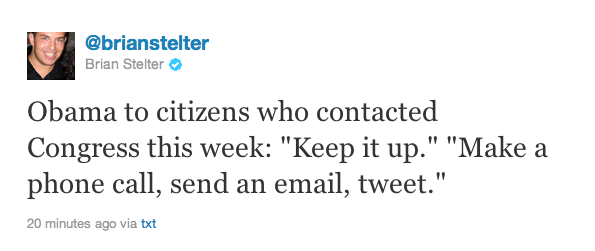

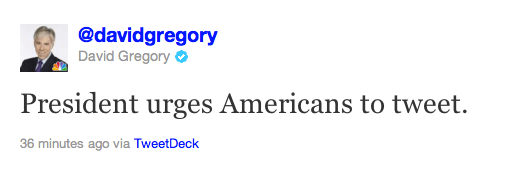

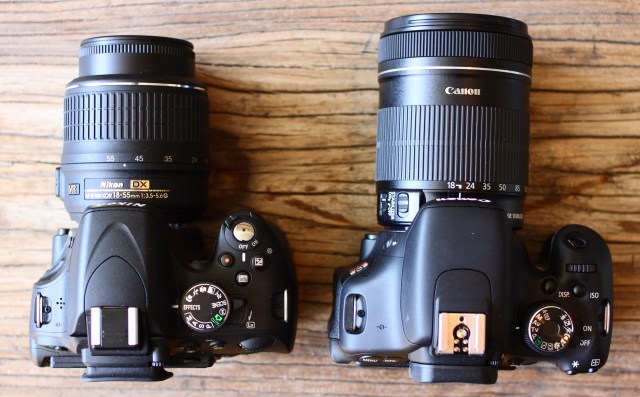
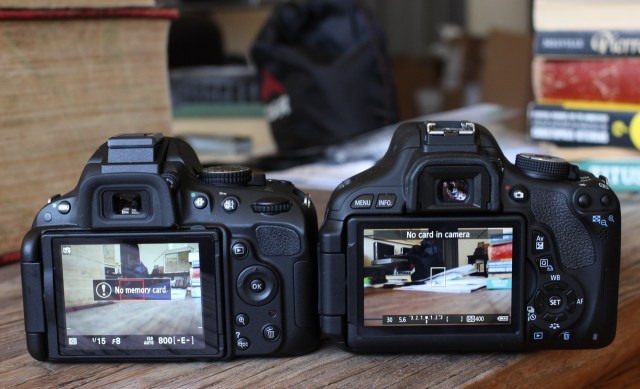
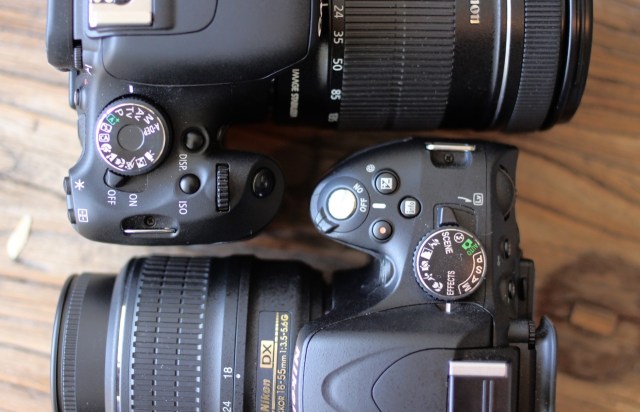
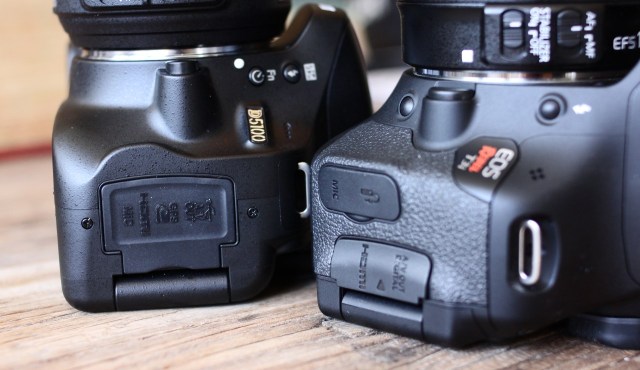






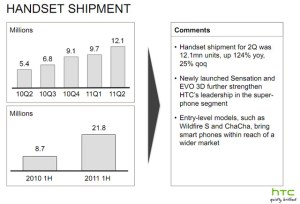
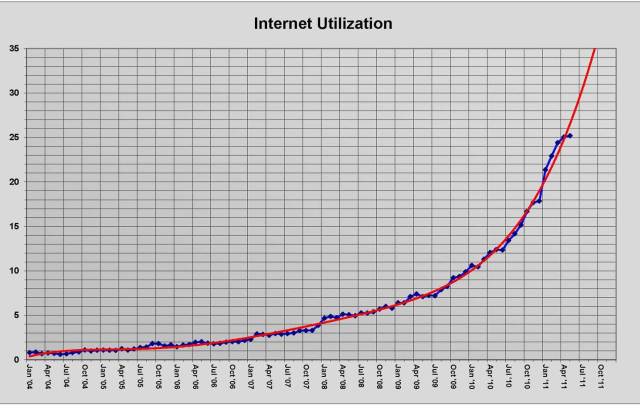
 Ten startups were showcased to investors at the brand new
Ten startups were showcased to investors at the brand new 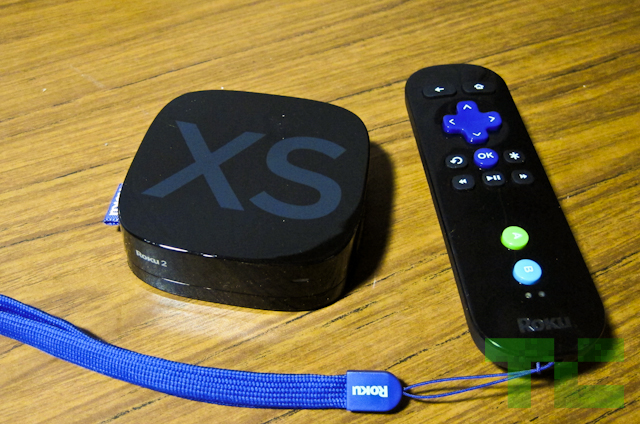


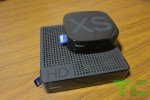

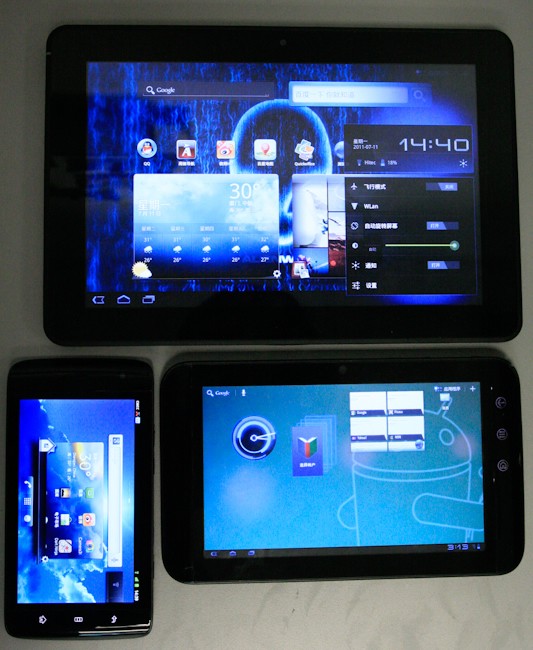

No comments:
Post a Comment